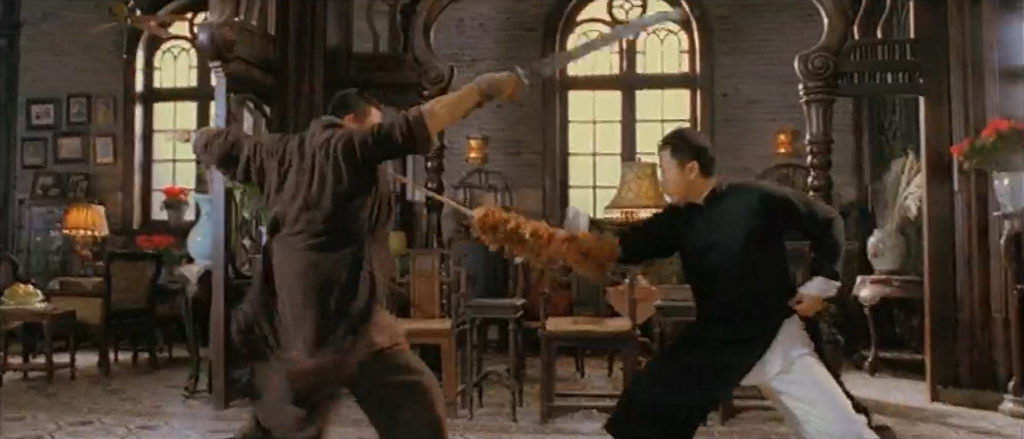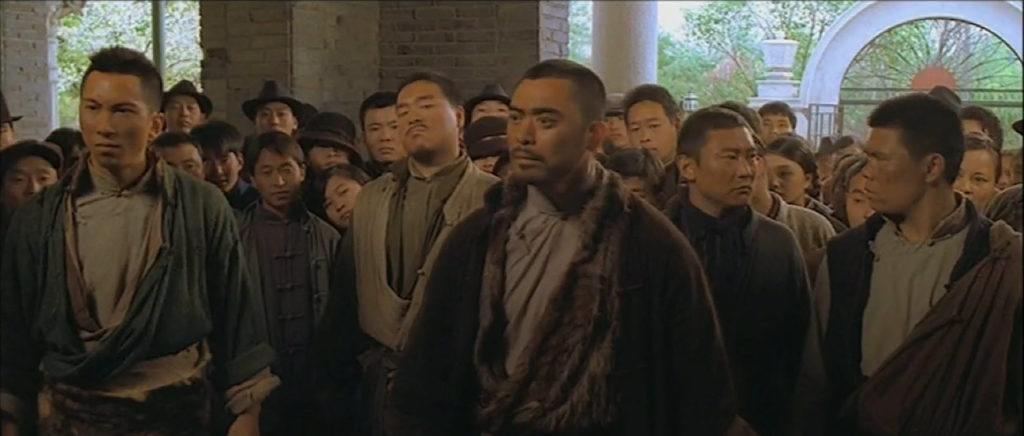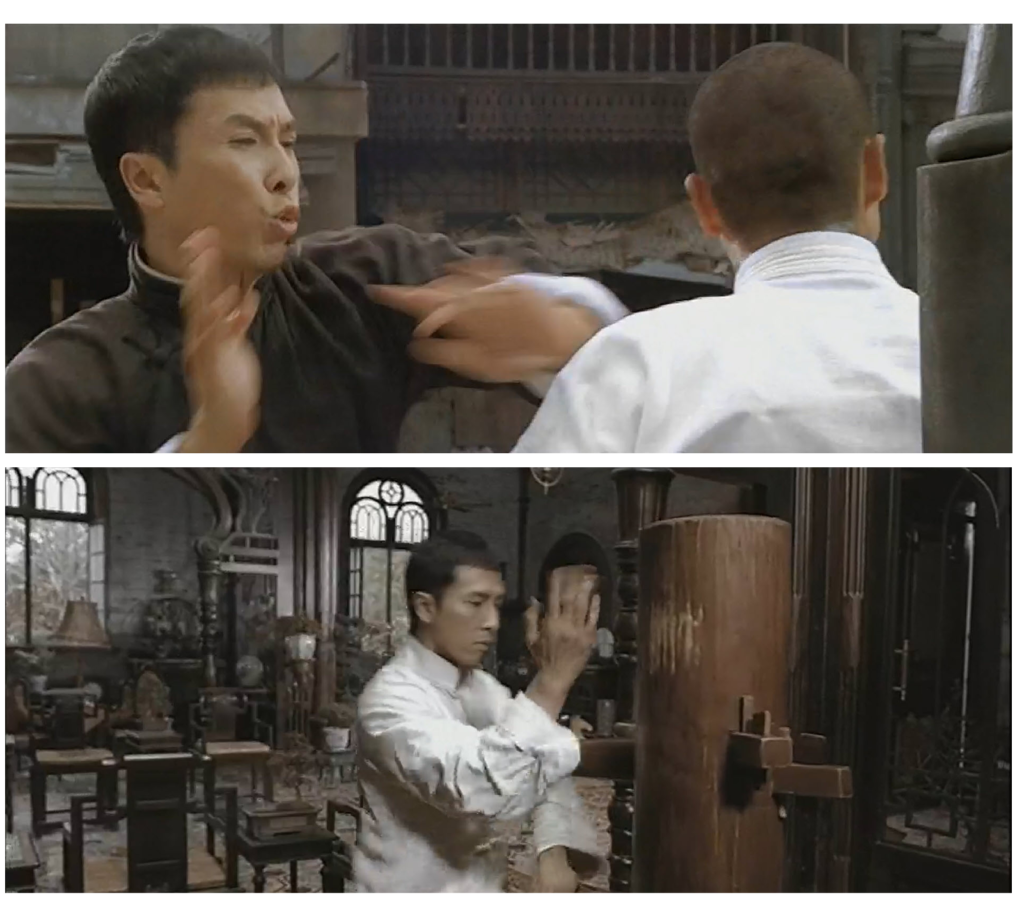Almost everyone has enjoyed a kung fu movie, and the films of Bruce Lee are often considered classics, but studying global cinema has made me realise there are more to these thrilling actions than meets the eye. Films can give rich insight into places and identities, and I really enjoyed discovering this through a close study of Wilson Yip’s Ip Man (2008). See my analysis below.

Wilson Yip’s presentation of place, identity and character in his film Ip Man (2008) effectively reflects Hong Kong’s post-colonial identity while reconnecting to a Chinese context. Yip amalgamates Hong Kong’s internationally popular kung fu action cinema with mainland China’s wuxia cinema, reflecting the region’s zeitgeist not long after the handover of sovereignty from the United Kingdom to the People’s Republic of China in 1997. Rather than continuing the canon of kung fu cinema featuring San Francisco-born Bruce Lee, Ip Man stars Donnie Yen in a retelling of the life of the Cantonese wing chun grandmaster Ip Man, teacher of Bruce Lee. Yip’s presentation of Ip Man’s character strongly realigns with traditional Confucian ideals, evident in China’s wuxia cinema. Additionally, the film’s depiction of place refamiliarises audiences with a Southern Chinese and Cantonese tradition. However, vital elements of Hong Kong’s action cinema remain evident, reflecting the reconstruction of Hong Kong’s film industry and social identity post-1997.
Yip’s film distances itself from many aspects of Hong Kong’s kung fu action cinema to realign with a Chinese context, particularly evident in the patriotic characterisation of protagonist Ip Man. After the handover of Hong Kong, the region’s film production decreased rapidly, and Beijing and Shanghai re-emerged as competitors (Yang, 2019, p. 62). However, co-productions between Hong Kong and China dramatically increased under the Mainland and Hong Kong Closer Economic Partnership Arrangement (Yang, 2019, p. 62). These co-productions, like Ip Man, shifted kung fu cinema’s focus on shizhan (combativity), which Bruce Lee popularised, to instead emphasise zhenshi (authenticity), as exemplified by Ip Man and a history of Wuxia cinema depicting traditional Chinese martial arts (Wong, 2017, p. 73).

Ip Man’s divergence from kung fu cinema’s focus on shizhan (combativity) to realign with a historical Chinese context of zhenshi (authenticity) is illustrated when newly arrived Master Liu challenges Ip to a biwu (kung fu duel). Ip Man’s characterisation challenges the archetype of “aggressiveness, brutality, and sexuality” (Wong, 2017, p. 74) created by Bruce Lee within the 1970s’ kung fu craze’ (Wong, 2017, p. 73). Instead, Ip embodies the Confucian ideals and honour codes evident in traditional Chinese martial arts (Yang, 2019, p. 65). Despite being interrupted by Master Liu during his family dinner, Ip invites Liu to join them at the table rather than wait for him. Director Yip highlights Ip’s win in the fight sequence’s concluding shot as Liu is symbolically positioned on the ground under Ip (Figure 1 above), with the camera below eye level to emphasise Ip’s success. Ip then brings Liu to his feet as the eye of the camera also rises, raising him back to the level of equality (Figure 2 below), where Ip thanks Liu for “letting [him] win”, exemplifying Confucian honour evident in China’s Wuxia cinema.
In these scenes, Ip Man’s traditional characterisation differs dramatically from the brutal shizhan (combativity) focused characterisation of kung fu’s protagonists. Ip’s respectful treatment of Liu, promising not to reveal his win to allow Liu to save face, characterises Ip with benevolence, moderation, and harmony (Yang, 2019, p. 66), which contrasts the aggression of past kung fu protagonists, like Bruce Lee. Additionally, Kung fu protagonists were defined by the bold display of their bodies. However, director Yip costumes Ip in a plain chang shan (long gown), highlighting his modesty and humility (Wong, 2017, p. 77). Overall, Ip’s characterisation through dialogue, action and costuming realigns with the Chinese history of zhenshi (authenticity) focused martial arts cinema, highlighting a reversion in Hong Kong’s post-colonial society and cinema.
Within the revival of Chinese identity in Hong Kong after the 1997 handover of sovereignty, the region’s cinema reemphasised its Southern Chinese context and Cantonese culture. Yip’s film Ip Man rejected the ambiguous location conventions of Hong Kong martial arts cinema with a distinguished Chinese setting (Yang, 2019, p. 63), evident in Yip’s specific creation of place in 1930’s Foshan. While kung fu performed by Bruce Lee “is a mixture of Japanese/Korean kicking techniques and Western boxing footwork” (Wong, 2017, p. 78), the martial art in Ip Man accurately reflects the Southern tradition or nanpai.
Grounding Ip Man’s sense of place in Southern China, Yip employs a contrast between nanpai (traditional Southern martial arts) and beipai (the Northern school) in the fight sequence between Ip and Northerner, Kam Shan-Chau. Kam exemplifies the Northern practice with his ornamental and acrobatic movements (Figure 3 left), as well as in the way he favours weaponry (Wong, 2017, p. 74). Contrastingly, Ip exemplifies Southern Wing Chun with his practical, quick and precise choreography (Wong, 2017, p. 84), performing up to 10 moves in 2 seconds to bring Kam to the floor. When Kam returns with a sword, Ip symbolically disarms him with a feather duster (Figure 4 right), embodying a traditional understanding of Confucian humility and aversion to unnecessary violence (Wong, 2017, p. 82). Overarchingly, Yip uses Ip and Northern Kam’s contrasting styles to create an authentic and patriotic sense of place grounded in Southern Chinese culture.



Yip further employs contrast between Ip Man and Kam to create a distinctive sense of place in Southern China. While Ip speaks evenly and calmly in Cantonese, Kam speaks loudly and aggressively in Mandarin. Their differences in place are also evident in costuming, with Ip and other Southerners dressed in refined chang shan (long gown) or Western clothing, while Kam and his Northerners wore rough, earth-coloured hanfu (robes) (Figure 5 left). Yip’s use of this stereotyped vernacular and costume grounds the film’s sense of place firmly in Cantonese culture (Wong, 2017, p. 74), reflecting a renewed appeal to regional patriotism in Hong Kong’s society after the return of China as a governing power.
Alongside the evident revival of Chinese influence in Yip’s Ip Man, Hong Kong’s kung fu action cinema elements remain evident, reflecting the region’s unique identity as an intermediary between mainland China and the global context. While Ip Man has a stronger emphasis on zhenshi (authenticity) than most mid to late century kung fu films, Yip has maintained components of shizhan (combativity) popularised by Bruce Lee (Wong, 2017, p. 73), which differentiate the film from traditional wuxia cinema. Most notably, the film lacks the fantasy elements characteristic of wuxia cinema (Wong, 2017, p. 73); however, Ip Man also features a protagonist who lapses into moments of brutality. This lapse in Confucian honour differentiates Ip from protagonists in wuxia cinema (Wong, 2017, p. 82) and more closely aligns with the kung fu action tradition.

Yip’s inclusion of moments of ruthless shizhan (combativity) within his otherwise patriotic Confucian hero acknowledges the legacy of kung fu star Bruce Lee (Yang, 2019, p. 66). Shizhan (combativity) is particularly evident in the final fight sequence between Ip and Japanese general Miura. The sequence begins with Ip’s voice-over reflecting that “the virtue of martial arts is kindness” before he foreshadows a rejection of this teaching, explaining “the Japanese do not understand.” The fight is captured in full-body medium shots, which track the horror of each moment of action, intensified by the visceral sound of cracking bones and beaten flesh. A montage juxtaposes Ip’s attack on Miura against a post (Figure 6 above) with shots of Ip practising on a wooden dummy (Figure 7 below), with the dehumanising parallel amplifying the ferocity (Wong, 2017, p. 83). In this moment of patriotic revenge, Yip’s reveals Ip as capable of both Confucian self-possession and brutality, becoming emblematic of the progression of Hong Kong’s action cinema.
Yip’s film Ip Man integrates regional and national histories to reflect the reconstruction of Hong Kong’s identity post-1997. Ip’s characterisation as an authentic Confucian practitioner of wing chung challenges the brutish and dramatised elements of kung fu action cinema, and the film reinstates the specific place of Southern Chinese martial arts in cinema. Additionally, Ip’s traditional identity is merged with elements of Bruce Lee’s shizhan (combativity) as he adapts to a dynamic and difficult world. Overarchingly, Yip’s creation of place, identity and character in Ip Man engagingly parallels Hong Kong’s identity in relation to mainland China and the global context.
References (APA 9th Edition)
Yang, J. (2019). Historicising martial arts cinema in post-colonial Hong Kong: The Ip Man narratives. IAFOR Journal of Cultural Studies, 4 (2), 59-70.
Wong, W. (2017). Synthesising Zhenshi (Authenticity) and Shizan (Combativity): Reinventing Chinese Kung Fu in Donnie Yen’s Ip Man Series. Martial Arts Studies, 3, 72-89.
Very interesting and enlightening! Not a genre I am very familiar with but was aware of. Cannot help wondering how the recent more complete takeover by the Chinese communist party has affected the style as well as the industry as a whole.